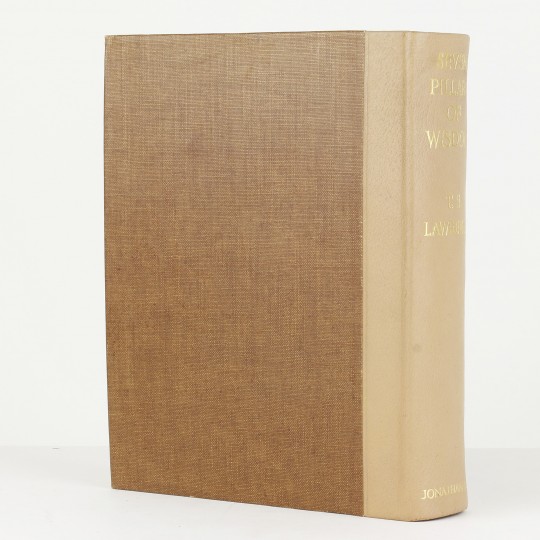

Lawrence's public image was due in part to American journalist Lowell Thomas' sensationalised reportage of the revolt as well as to Lawrence's autobiographical account Seven Pillars of Wisdom (1922). Seven Pillars of Wisdom is an autobiographical account of his experiences during the Arab Revolt of 19161918, when Lawrence was based in Wadi Rum in Jordan as a member of the British Forces. In January 1914, following the outbreak of the First World War, Lawrence was co-opted by the British military to undertake a military survey of the Negev Desert while doing archaeological research. He became a practising archaeologist in the Middle East, working with David George Hogarth and Leonard Woolley on various excavations. In the summer of 1896 the Lawrences moved to Oxford, where from 1907 to 1910 young Lawrence studied history at Jesus College, graduating with First Class Honours. Chapman left his wife to live with Sarah Junner, and they called themselves Mr and Mrs Lawrence.

Afterwards, in the autumn of 1919, this first draft and some of the notes were lost. Lawrence was born illegitimately in Tremadog, Wales in August 1888 to Sir Thomas Chapman and Sarah Junner, a governess, who was herself illegitimate. Lawrence (1926) Introductory Chapter The story which follows was first written out in Paris during the Peace Conference, from notes jotted daily on the march, strengthened by some reports sent to my chiefs in Cairo. The extraordinary breadth and variety of his activities and associations, and his ability to describe them vividly in writing, earned him international fame as Lawrence of Arabia, a title popularised by the 1962 film based on his First World War activities. Lawrence, was a British Army officer renowned especially for his liaison role during the Arab Revolt against Ottoman Turkish rule of 1916–18. Lawrence of Arabia Photos Lieutenant Colonel Thomas Edward Lawrence, CB, DSO (16 August 1888 – ), known professionally as T.


 0 kommentar(er)
0 kommentar(er)
